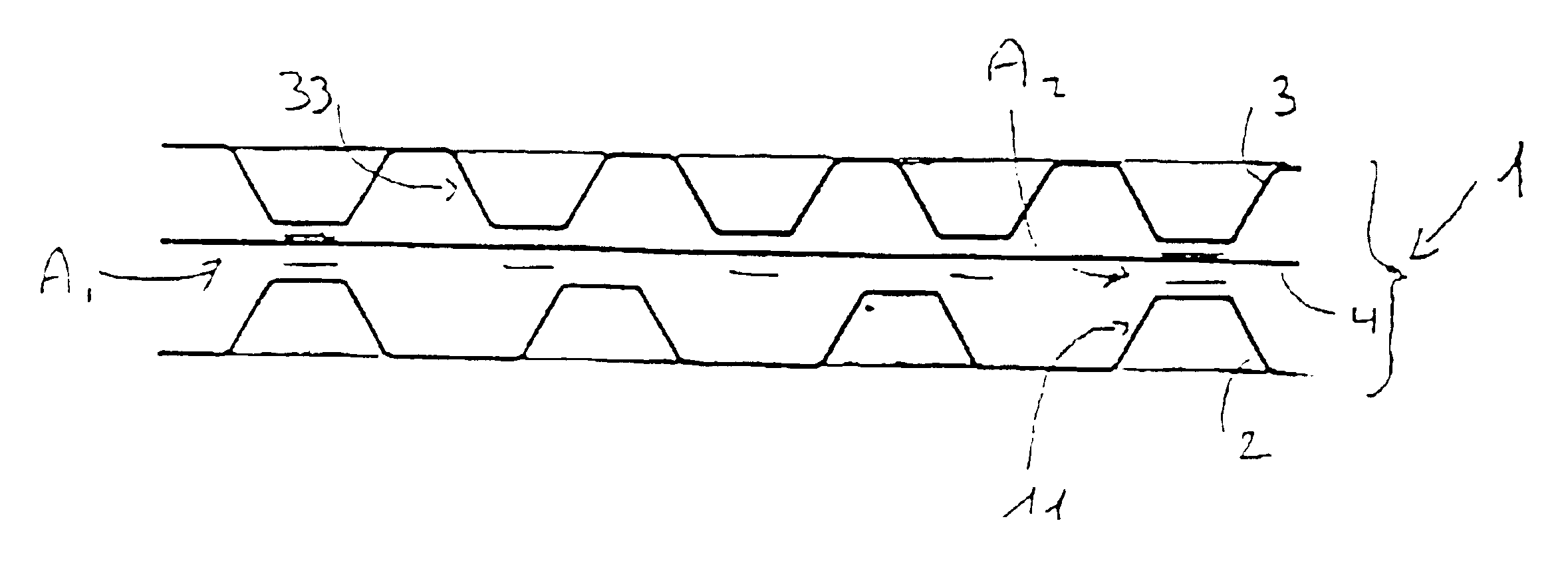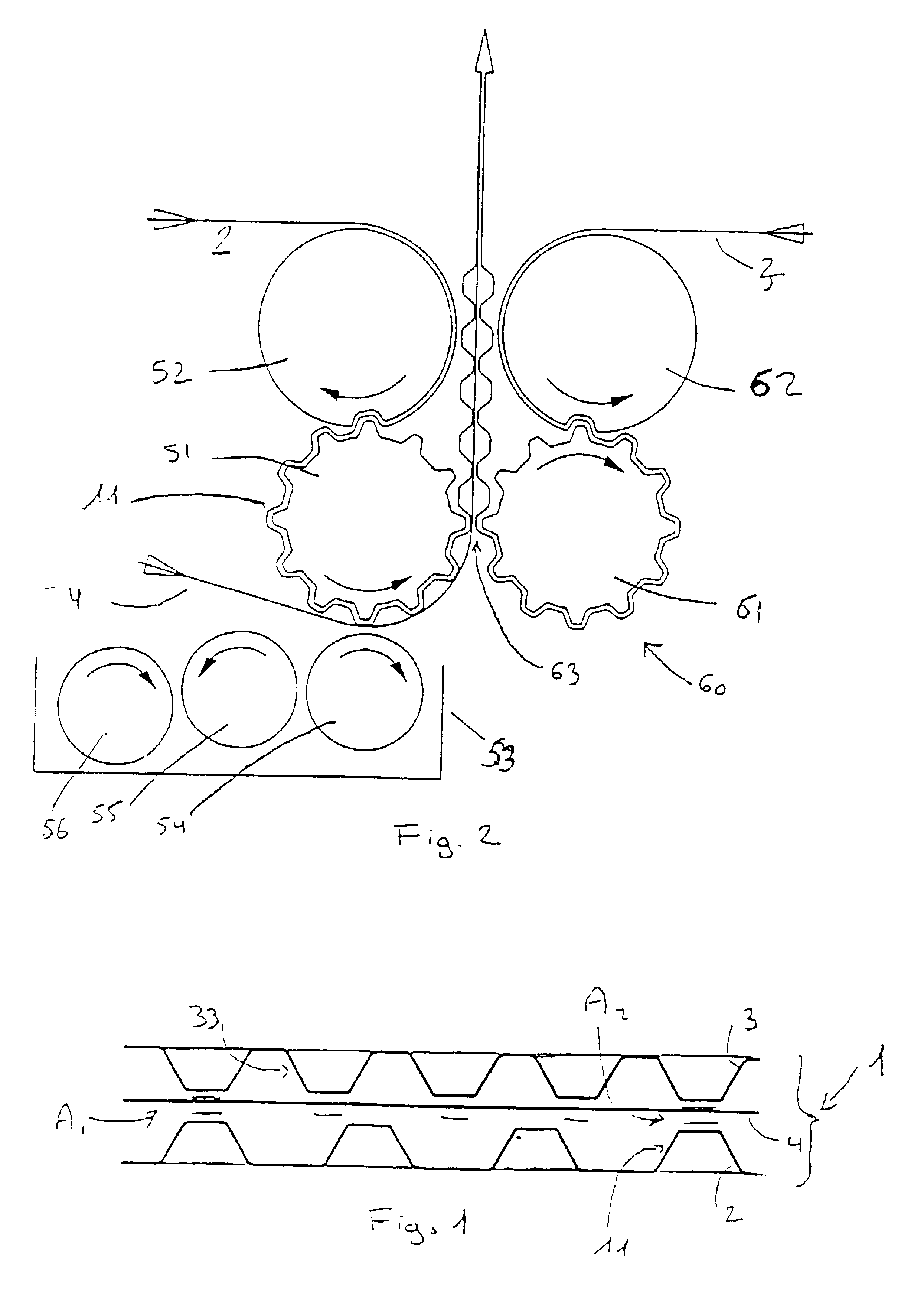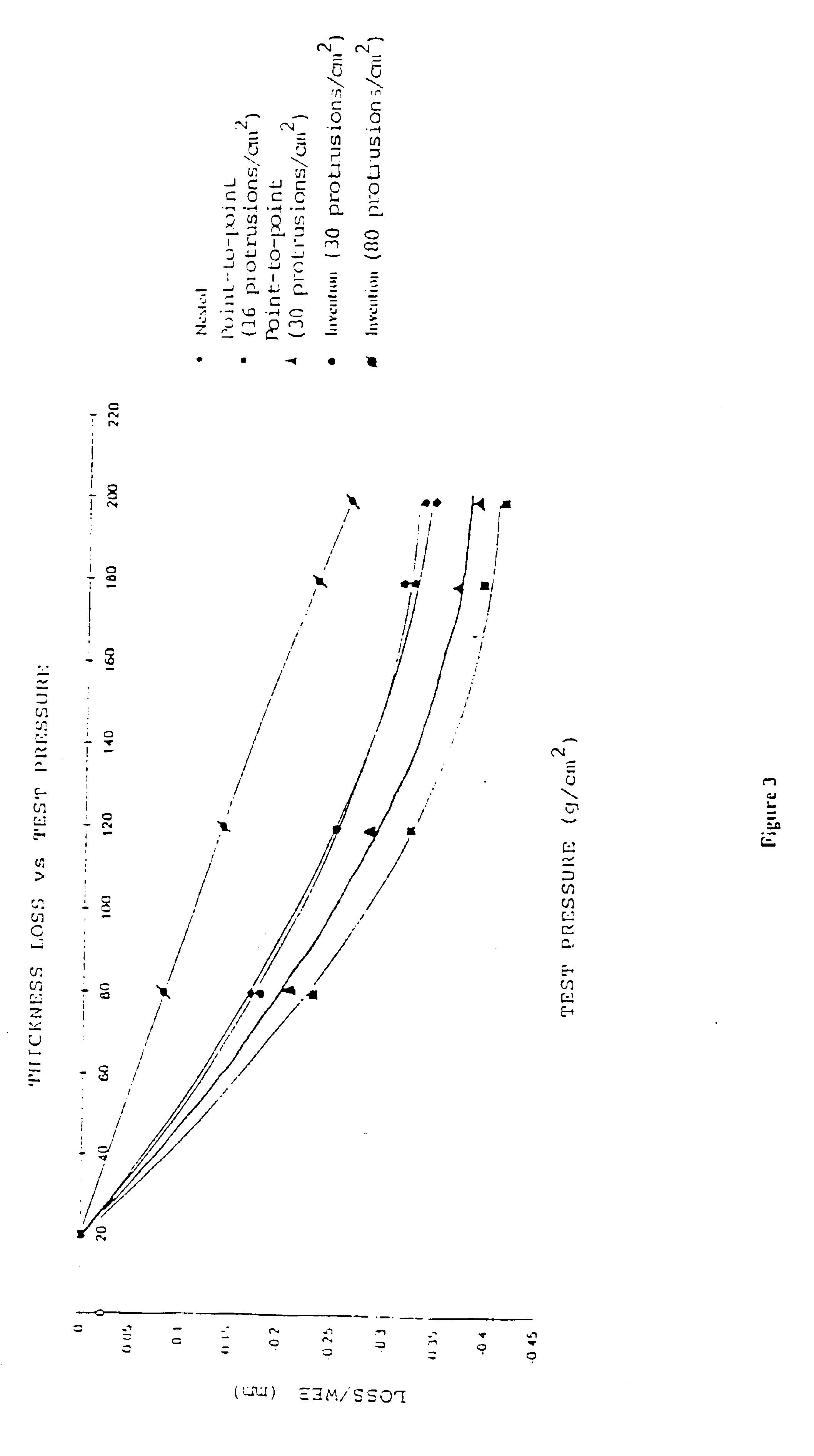Three-ply absorbent paper product and method of making
a technology of absorbent paper and absorbent paper, which is applied in the directions of paper after-treatment, reinforcing agent addition, lamination, etc., can solve the problems of comparatively complex structure, less than optimal softness, and rapid wear of embossing cylinders
- Summary
- Abstract
- Description
- Claims
- Application Information
AI Technical Summary
Benefits of technology
Problems solved by technology
Method used
Image
Examples
Embodiment Construction
In FIG. 1, the product 1 of the invention includes three plies, namely a first external embossed ply 2, a second external embossed ply 3, and a central or third smooth or unembossed ply 4. The three plies are mutually bonded. The first external embossed ply includes protrusions 11 distributed at a constant and specific pitch. The external second embossed ply also includes protrusions 33 distributed at a specific, constant pitch which, however, differs from that of the protrusions 11 of the first ply. In the configuration of the product of the invention, the protrusions of each external embossed ply point inward. The three plies are mutually bonded at the distal surfaces of the protrusions of each external ply which are arranged opposite each other or in tip-to-tip positions. In the product illustratively shown in FIG. 1, the pitches of the external plies being respectively different, bonding takes place only where the protrusions are at least partially in the tip-to-tip positions il...
PUM
| Property | Measurement | Unit |
|---|---|---|
| descent speed | aaaaa | aaaaa |
| specific surface weight | aaaaa | aaaaa |
| pressure | aaaaa | aaaaa |
Abstract
Description
Claims
Application Information
 Login to View More
Login to View More - R&D
- Intellectual Property
- Life Sciences
- Materials
- Tech Scout
- Unparalleled Data Quality
- Higher Quality Content
- 60% Fewer Hallucinations
Browse by: Latest US Patents, China's latest patents, Technical Efficacy Thesaurus, Application Domain, Technology Topic, Popular Technical Reports.
© 2025 PatSnap. All rights reserved.Legal|Privacy policy|Modern Slavery Act Transparency Statement|Sitemap|About US| Contact US: help@patsnap.com



